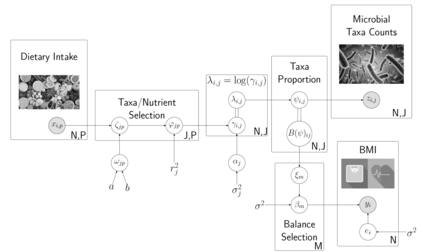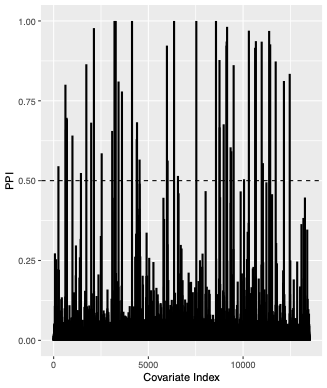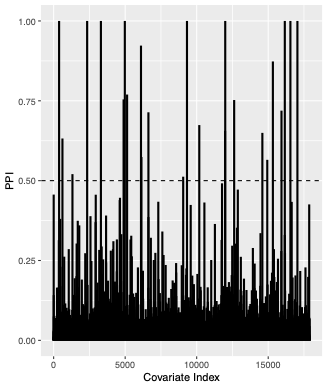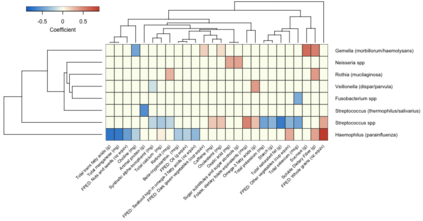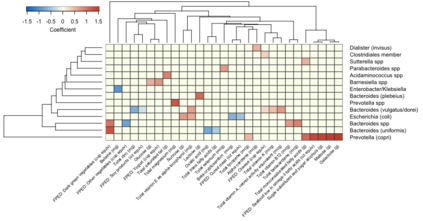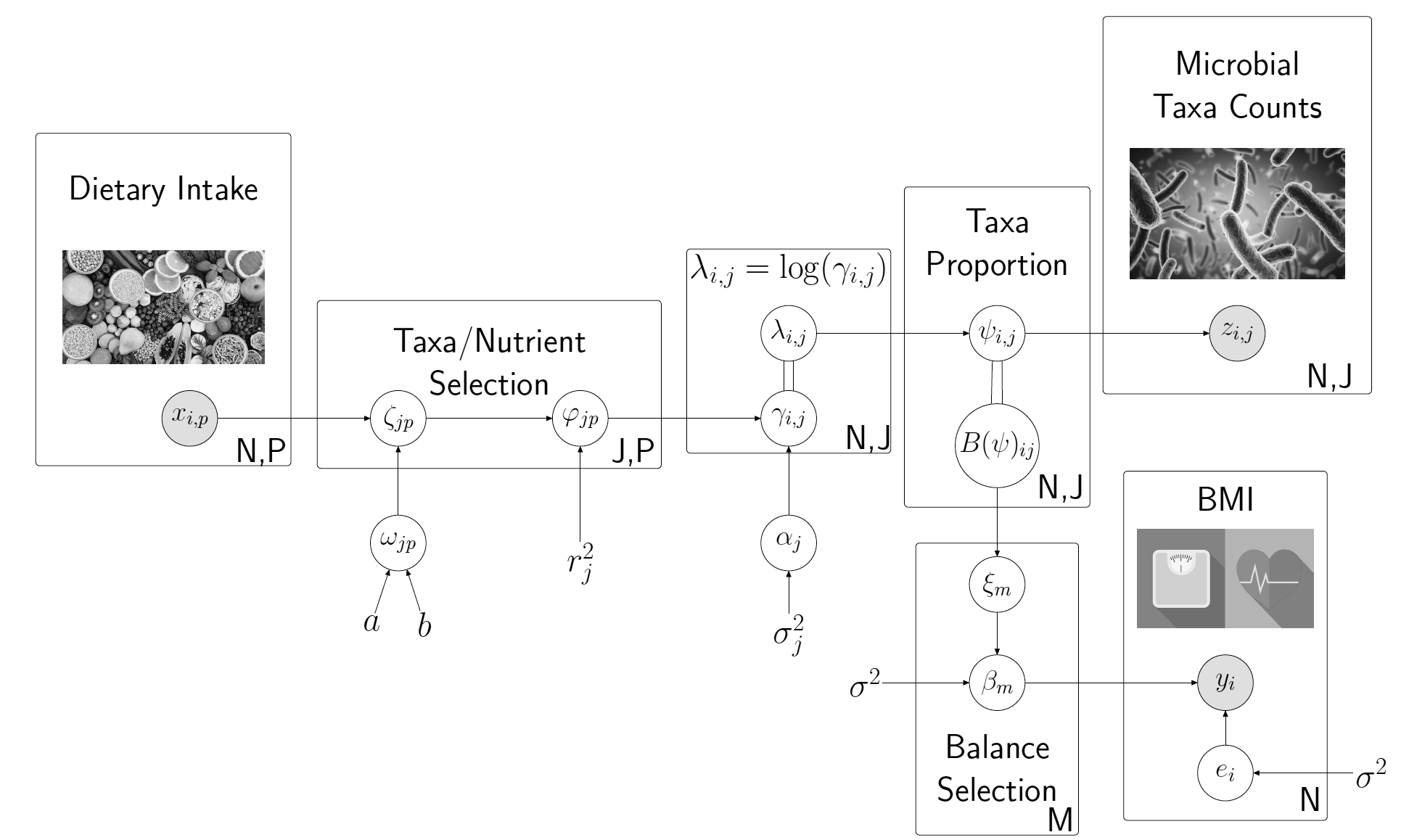One of the major research questions regarding human microbiome studies is the feasibility of designing interventions that modulate the composition of the microbiome to promote health and cure disease. This requires extensive understanding of the modulating factors of the microbiome, such as dietary intake, as well as the relation between microbial composition and phenotypic outcomes, such as body mass index (BMI). Previous efforts have modeled these data separately, employing two-step approaches that can produce biased interpretations of the results. Here, we propose a Bayesian joint model that simultaneously identifies clinical covariates associated with microbial composition data and predicts a phenotypic response using information contained in the compositional data. Using spike-and-slab priors, our approach can handle high-dimensional compositional as well as clinical data. Additionally, we accommodate the compositional structure of the data via balances and overdispersion typically found in microbial samples. We apply our model to understand the relations between dietary intake, microbial samples, and BMI. In this analysis, we find numerous associations between microbial taxa and dietary factors that may lead to a microbiome that is generally more hospitable to the development of chronic diseases, such as obesity. Additionally, we demonstrate on simulated data how our method outperforms two-step approaches and also present a sensitivity analysis.
翻译:有关人类微生物研究的主要研究问题之一是设计一些干预措施的可行性,以调节微生物的构成,促进健康和治愈疾病。这要求广泛了解微生物的调节因素,如饮食摄入,以及微生物构成与体积指数(BMI)等体积结果之间的关系。以前的努力分别模拟了这些数据,采用了两步方法,可以产生对结果的偏差解释。在这里,我们提议了一种巴耶西亚联合模型,同时确定与微生物构成数据有关的临床变量,并利用组成数据中的信息预测对口孔的反应。我们的方法可以使用钉子和板块的前身处理高维度的构成因素以及临床数据。此外,我们通过平衡和微生物样本中常见的过度偏差来适应数据的构成结构。我们采用我们的模型来理解饮食摄入、微生物样品和BMI之间的关系。在这个分析中,我们发现微生物税和饮食因素之间有许多关联,可以利用构成组成数据的信息来预测对口腔反应。我们的方法可以处理高维度的构成和临床数据。此外,我们的方法可以更充分地展示我们目前这种微生物的系统方法是如何发展的。

